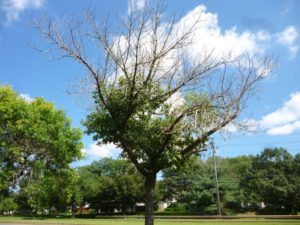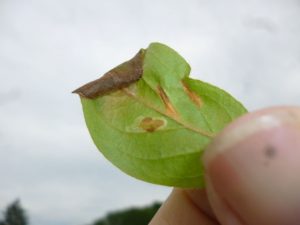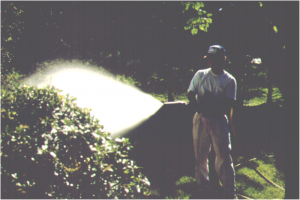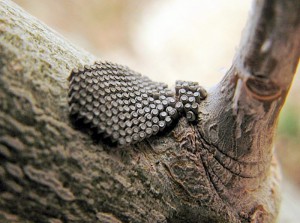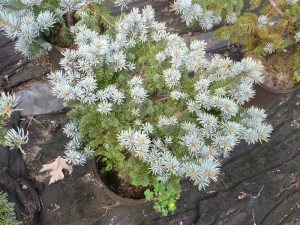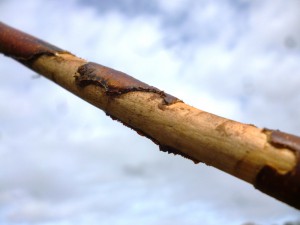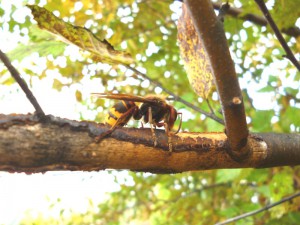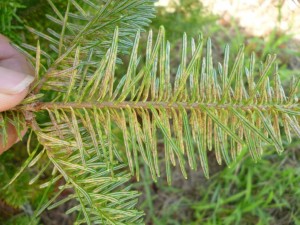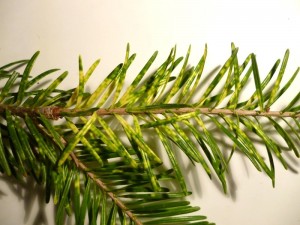Today, it is understandable for arborists and landscapers to assume that Emerald Ash Borers (Agrilus planipennis) are the cause when they observe branch die-back of ash trees (Fraxinus genus). During the 21st century, this invasive Asian tree beetle borer has killed many 100’s of millions of ash tree species as it has spread across much of the eastern half of the United States. However, it is important to remember some of the other wood borer species that cause ash decline, if not death. This blog will discuss the symptoms to distinguish between the Emerald ash beetle borer, the Ash/Lilac Clearwing moth borer (Podosesia syringae), the Banded Ash Clearwing moth borer (Podosesia aureocincta) and Ash Bark Beetle borers (Hylesinus species). Only the ash bark beetle species will have more than a single generation per season.
Azalea Leafminer: A Commonly Unrecognized Azalea Pest Problem
The Azalea Leafminer (Caloptilia azaleella) produces plant symptoms that are typically subtle & can often be overlooked. Symptoms from this caterpillar can also confuse people by having both leafminer & leafroller stages. The early instar stages are leafminers, while the later instar stages are leafrollers or leaftiers. Commercial nurseries generally have more concerns with this pest, while they often receive little attention in the landscape. Although the Azalea Leafminer has 2+ generations per year, the azalea (Rhododendron genus) is the only known host of this native caterpillar having the unique one-two punch.
Primer: Landscape Dormant Oil Applications & Target Pests
In New Jersey, dormant oils (3-4%) are typically applied during March & April. However, many landscapers also apply dormant oils during the late fall months. Dormant oils have proven to be an effective material against a wide range of insect/mite pests & their eggs. Typical landscape pests targeted include spruce spider mites/eggs, southern red spider mites/eggs, oak spider mite eggs, aphid eggs, soft scales, armored scales (to a lesser degree), hemlock rust mites, spruce gall adelgids, lace bugs (deciduous plants), cankerworm eggs, psyllids, plant bugs, etc.
Why Do Spruce Trees Show Interior Needle Discoloration?
Occasionally, observations of White Spruce (Picea glauca) or Colorado Spruce (Picea pungens) within landscapes, nurseries, & Christmas tree farms will show current needle growth having a blue or blue-green color, but with older, inner needles having lost the desirable color and turning pale or even yellow. Although sometimes seen on Norway Spruce, these symptoms are most common on the White & Colorado Spruce species. Sometimes symptoms can become dramatic and initiate both aesthetic and plant health concerns. Although the reasons for such symptoms can be from a complex number of conditions, a compromised root system is typically the underlying cause.
European Hornet: The Mysterious Branch Girdler
During the later weeks of summer & early weeks of fall the mysterious removal of bark sections typically found on branches of Birch, Rhododendron, and Lilac can sometimes be observed. These girdled or stripped bark sections are probably being done by European Hornets. These vespids have been reported to potentially have a worse temperament than timber rattle snakes.
[Read more…]
Beware of the Cryptomeria Scale Hiding Beneath a Transparent Cover
Armored scales are generally regarded by green industry plant managers as being one of the more difficult insect pests to control. The Cryptomeria scale (Aspidiotus cryptomeriae ‘Kuwana’) is an armored scale that is notorious for being especially difficult to detect because of the translucent waxy cover. The elongate hemlock scale species resembles this scale, but it has a waxy cover that is caramel brown in color. Although the hosts of Cryptomeria scale can potentially include numerous conifer species, they are most typically found on hemlocks & pines in the landscape and on true firs in production situations such as Christmas tree farms. The damage potential is especially high on true firs.
